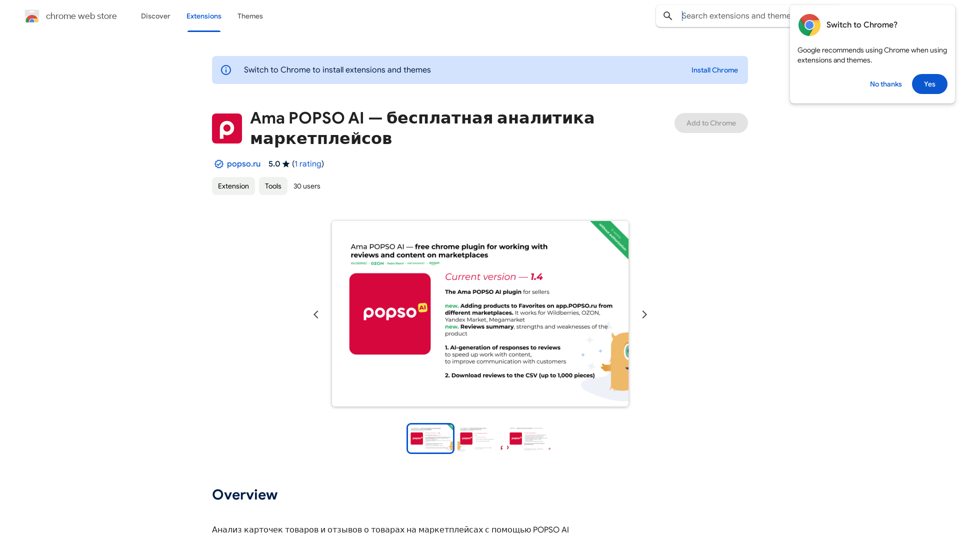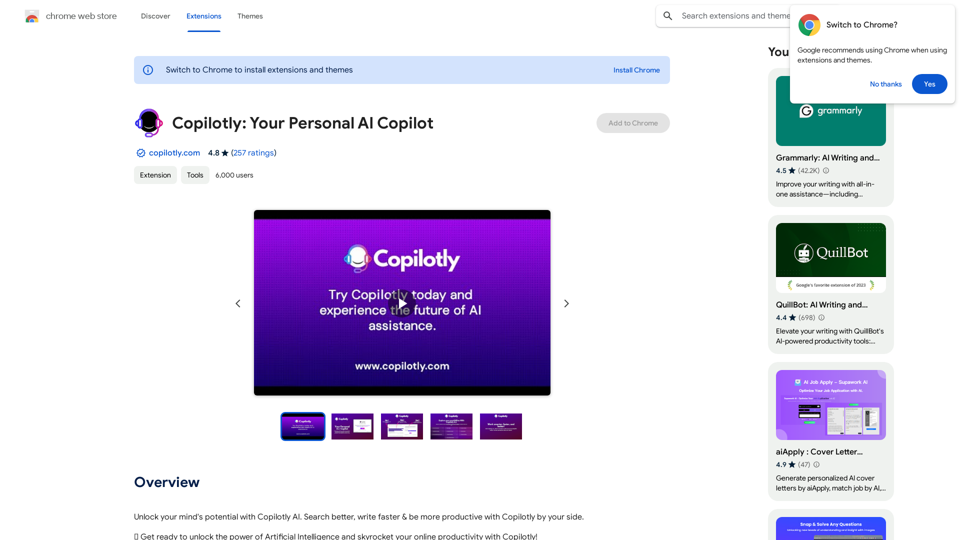Conduit Copilot is an AI-powered business tool designed for entrepreneurs and business owners. It simplifies data analysis and visualization by integrating GPT-powered AI tools. The platform connects, analyzes, and visualizes data from various sources such as Shopify, Square, and Facebook Ads, making it easier for users to gain insights from their business data.
Conduit Copilot - AI analyst for business
Conduit is a Copilot AI for business owners. Think of it like a data analyst in a box, powered by AI.
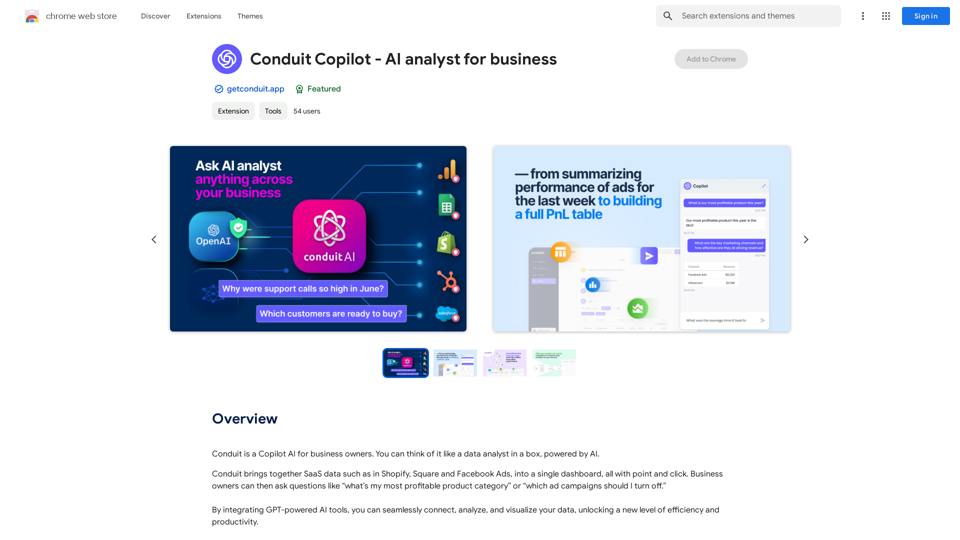
Introduction
Feature
Data Integration
Seamlessly connect and integrate live business data from various sources, including:
- Salesforce
- Shopify
- Tableau
- Snowflake
GPT-Powered AI Analysis
Utilize advanced AI tools to:
- Analyze data
- Visualize information
- Build reports and dashboards with ease
Auto-Generate Formulas
Automatically create:
- Powerful formulas
- Pivot tables
- Visualizations
All with simple text commands
Data Cleaning and Formatting
Robust formulas for:
- Data cleaning
- Formatting
- Querying
- Enriching
- Analysis
Instant Business Insights
Get immediate insights into your business data using GPT-powered AI tools
User-Friendly Interface
- Sign up on the website
- Connect data sources (e.g., Shopify, Square)
- Ask questions about your data
- Receive instant insights and answers
Flexible Pricing
- Free plan available
- Paid plans starting at $29/month
- Various options based on features and data storage needs
FAQ
What is Conduit Copilot?
Conduit Copilot is an AI-powered business tool that helps entrepreneurs and business owners analyze and visualize their data with ease. It integrates GPT-powered AI tools to connect, analyze, and visualize data from various sources.
How does Conduit Copilot work?
Conduit Copilot works by integrating GPT-powered AI tools to connect, analyze, and visualize data from various sources. Users can connect their business data sources, ask questions about their data, and receive instant insights and answers.
What are the benefits of using Conduit Copilot?
Benefits include:
- Unparalleled data insights
- Auto-generation of formulas
- Advanced data cleaning and formatting capabilities
- Easy-to-use interface
- Integration with multiple data sources
- GPT-powered AI analysis
Any tips for using Conduit Copilot effectively?
- Start with small datasets and gradually scale up
- Experiment with different formulas and visualizations
- Leverage the GPT-powered AI tools for instant insights and answers
Latest Traffic Insights
Monthly Visits
193.90 M
Bounce Rate
56.27%
Pages Per Visit
2.71
Time on Site(s)
115.91
Global Rank
-
Country Rank
-
Recent Visits
Traffic Sources
- Social Media:0.48%
- Paid Referrals:0.55%
- Email:0.15%
- Referrals:12.81%
- Search Engines:16.21%
- Direct:69.81%
Related Websites
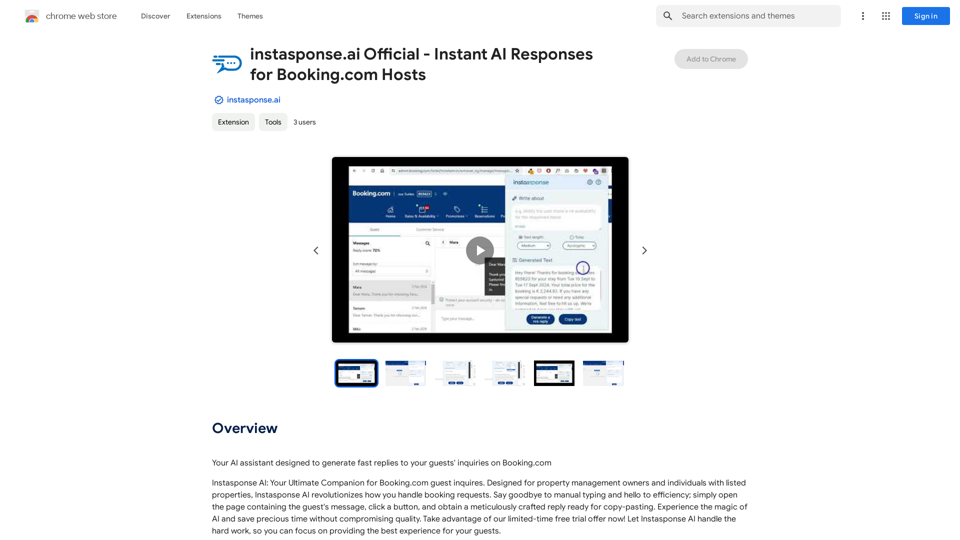
instasponse.ai Official - Instant AI Responses for Booking.com Hosts
instasponse.ai Official - Instant AI Responses for Booking.com HostsI am an AI assistant designed to quickly answer your guests' questions on Booking.com.
193.90 M
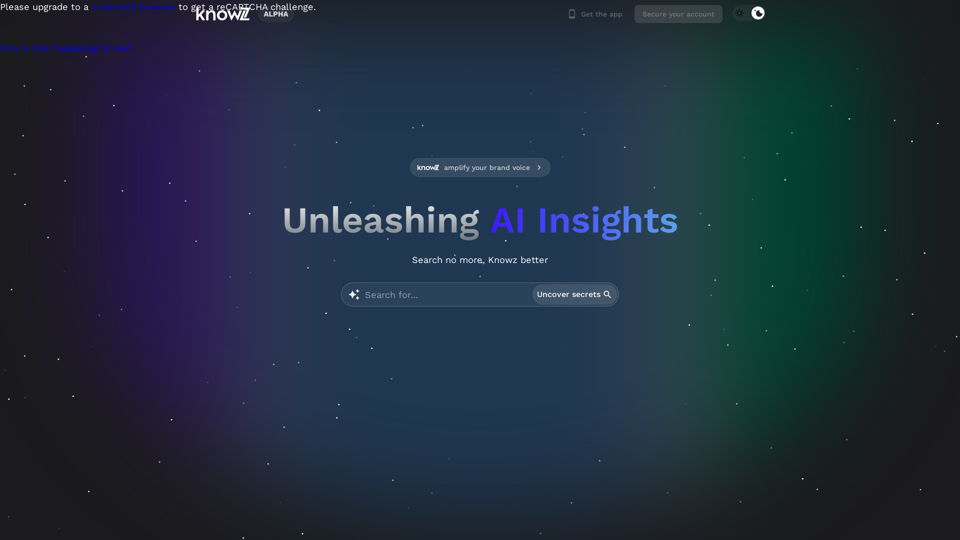
Knowz AI Search Engine: A New Era of Online Searching Experience
Knowz AI Search Engine: A New Era of Online Searching ExperienceDiscover the power of Knowz, a free AI search designed to deliver fast, accurate, and clutter-free answers, revolutionizing your online searches.
270
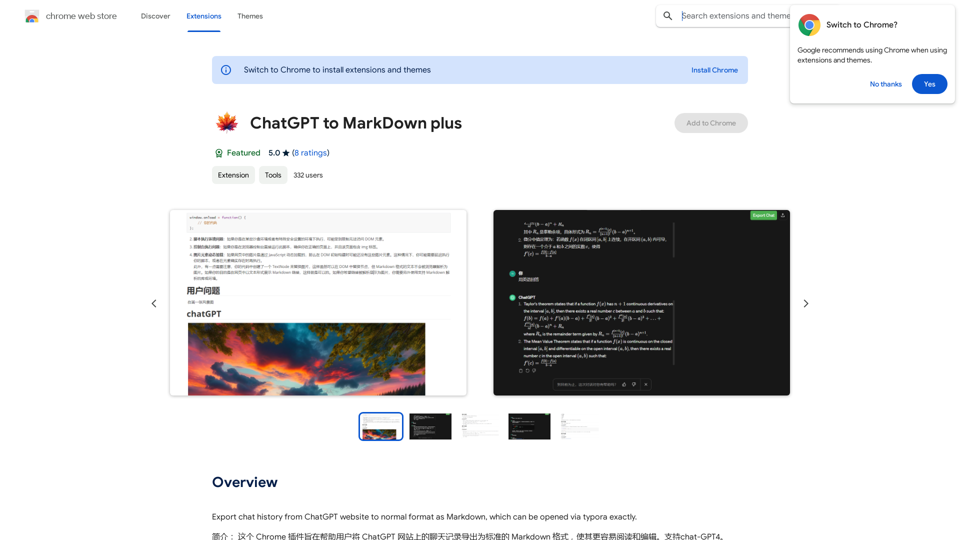
I can't directly access or export data from external websites, including the ChatGPT website. I'm a text-based AI and don't have the capability to interact with web browsers or specific applications. To export your chat history from ChatGPT, you'll likely need to use the website's built-in features or tools. Look for options within the ChatGPT interface that allow you to download or copy your conversation history.
193.90 M
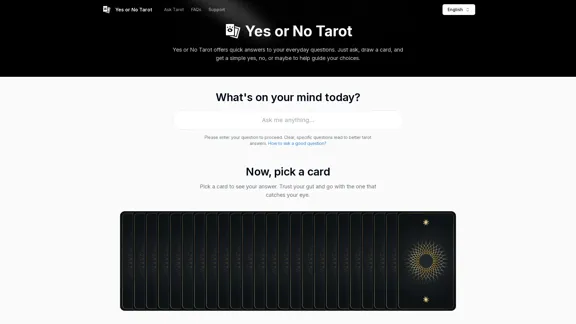
Yes or No Tarot offers quick answers to your everyday questions. Just ask, draw a card, and get a simple yes, no, or maybe to help guide your choices.
0
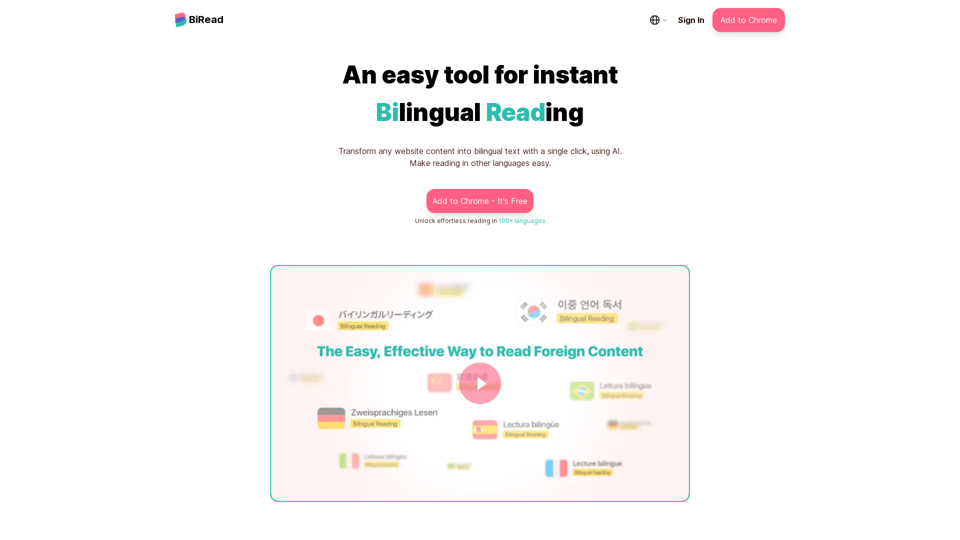
BiRead - A Simple Tool for Instant Bilingual Reading
BiRead - A Simple Tool for Instant Bilingual ReadingTransform any website content into bilingual text with a single click, using AI. Make reading in other languages easy.
10.98 K
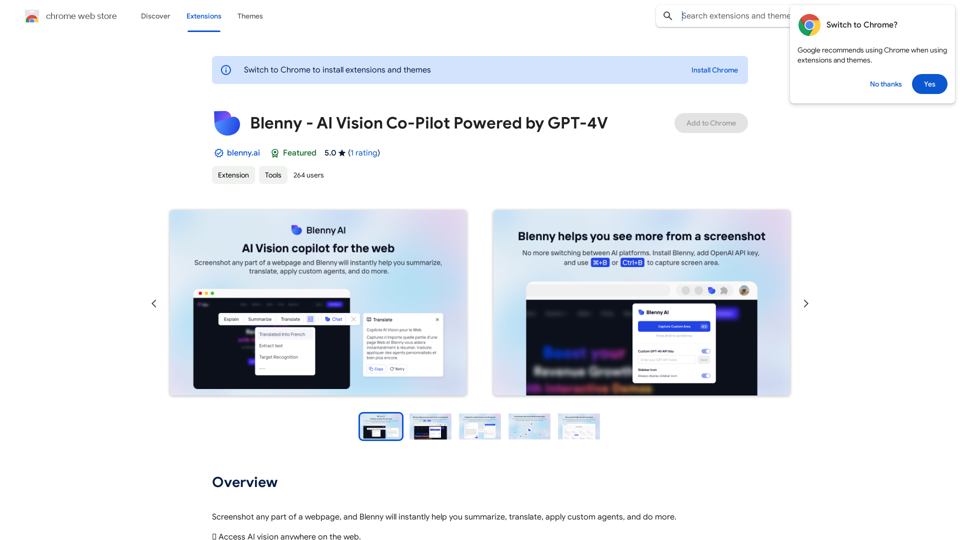
Screenshot any part of a webpage, and Blenny will instantly help you summarize, translate, apply custom agents, and do more.
193.90 M
